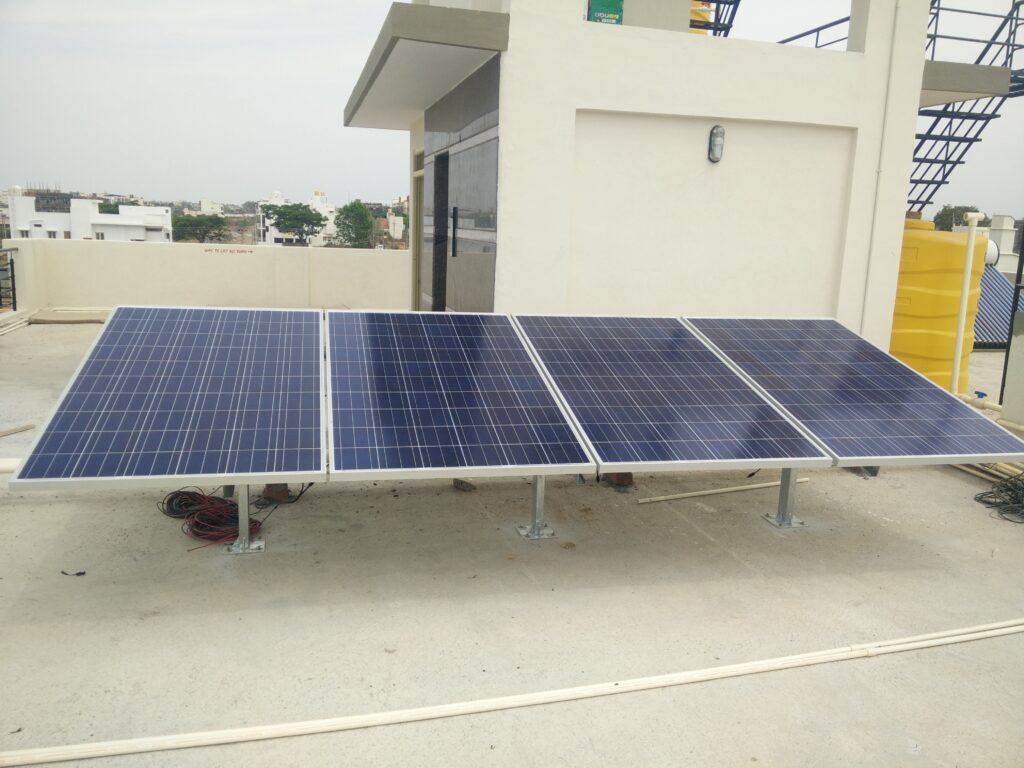Overview
With an On-grid solar system, you can export excess power generated at your home, to the grid on a sunny day and import power for your home’s needs from the grid on a cloudy day when you have a short supply of power. In this battery-less system, the solar generation is first used to meet the demand of the existing loads, and any excess generation is exported to the grid. If there is a short-supply or no solar generation, then the required energy is imported from the grid. These systems do not require batteries and are powered by the electrical grid.
A net-meter is a device that keeps track of how much energy is delivered to the grid and how much energy is taken away from it. A bi-directional net metre records the exported and imported electricity, and the consumer is charged only for the net electricity consumed from the grid at the end of the billing cycle. An on-grid solar system is also known as a grid-tied or grid-interactive solar system and is the most widely used type of photovoltaic (PV) power.
On-grid solar systems work extremely well for consumers who have reliable grid electricity and few power outages. Apart from residences, these systems are used as the principal source of power in educational institutions, industrial units, and commercial businesses.
How does an On grid PV system work?
The sun shines on the solar panels, which generate electricity. The inverter converts the DC from the sun into AC, which is then used by consumers in their homes or in commercial establishments. Any solar system’s functions are the same until this point. Beyond this point, the main distinction exists. Following our consumption of power, the surplus energy generated can take one of two paths:
- It can be stored in batteries and used later in the day (off-grid solar system) or it can be used immediately.
- Or it can be fed to the grid (on-grid solar system). Based on the feed-in-tariff rates (tariff fixed by the government for the purchase of solar power generated by solar plants) in your area, your electricity bill is reduced for the amount of power that you have sold to the power grid.

Benefits :
- Increased earning potential: With a net metre installed in your home, you can trace the number of units you send to the power grid and claim a credit on your home electricity bill. This is a profitable choice for consumers who see it as an additional source of income.
- More savings: The primary goal of an on-grid solar system is to lower your electricity expenses. You can tailor your consumption to match peak demand hours and avoid paying peak demand charges. These are the higher rates that the utility assesses for accessing the grid during peak demand periods. In addition, net metering allows you to save money on your electricity costs while also allowing you to earn more.
- Profitable investment: An on-grid solar system is a profitable investment. It has a payback period of five years and will deliver free electricity for the next two decades. By investing in solar, you may turn your own land into a revenue-generating avenue in as little as 3–4 years.
- Efficient working: the on-grid system is efficient since it is in tune with the grid. There are no restrictions with a grid-tied solar system; you can use it to power any home appliance. It also runs entirely on solar power, which is generated by solar panels.
- Easy on the pocket: Because an on-grid solar system does not require batteries, it is less expensive to install than an off-grid system. When compared to other solar systems, it is less expensive.
- Low maintenance

